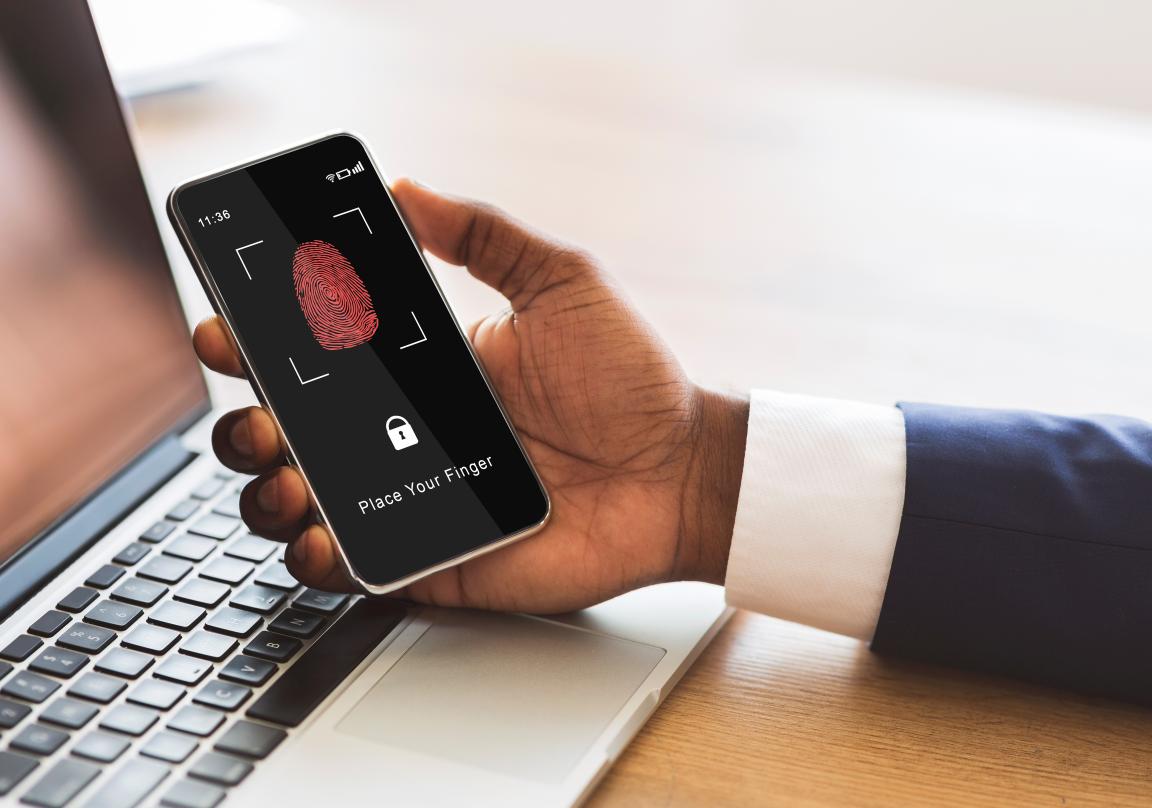Digital Scams Surge US Banks: Tips for Protecting Your International Accounts

US banks are witnessing a massive surge in digital scams, with both US banks and their clients increasingly targeted. Cybersecurity firms reported a jaw-dropping 1,000% increase in complex fraud attempts over the last year.
A new report highlights that sophisticated digital scams have become prevalent, costing the industry billions and forcing banks to rethink how they defend people’s money.
These sophisticated scams, often powered by artificial intelligence and deepfake tech, are now prevalent and target even careful individuals. Major US banks are among the most affected, facing a sharp rise in social engineering attacks.
Major institutions like JPMorgan Chase, Wells Fargo, and Bank of America are scrambling to protect customers and sort out reimbursement as scammers exploit digital payment platforms like Zelle with scary efficiency.
Explosive Rise of Digital Scams in US Banks
Digital scams in US banks have exploded. According to cybersecurity firm BioCatch, there has been a 1,000% surge in reported scams, with imposter scams being a key category, in social engineering attacks in just the past year.
Big banks like JPMorgan Chase, Wells Fargo, and Bank of America now face growing pressure. Customers lose millions to advanced fraud, especially on instant payment services like the Zelle service. Reporting these scams is crucial for tracking trends and improving prevention efforts. Scammers often target sensitive information, such as banking credentials and personal details, using sophisticated tactics. To combat these threats, banks are increasingly relying on advanced detection tools, including device intelligence, to identify and prevent fraudulent activities.
Scale and Drivers Behind the Surge
The scale of digital scams in North American banks is staggering, driven by a surge in digital fraud targeting both institutions and customers. BioCatch’s data shows social engineering scams targeting US and Canadian bank customers have ballooned by 1,000% in a single year.
Account-opening fraud actually dropped by 60% thanks to better security and banks investing in advanced prevention measures. Yet check and deposit fraud tripled, highlighting ongoing risk and the emergence of high risk transactions that require enhanced monitoring.
AI-powered scams using deepfakes are showing up more and more. Criminals adapt quickly when banks strengthen defenses against old fraud tricks, often exploiting human psychology and behavioral vulnerabilities through deceptive tactics.
Banks have made it harder for scammers to take over accounts or break in without permission. However, some banks are failing to implement adequate safeguards, leaving gaps that scammers exploit. As a result, scammers now focus on tricking people directly with social engineering, using sophisticated methods to impersonate entities such as banks, family members, or other trusted organizations.
Scammers create convincing fake websites and impersonate entities to deceive victims, often targeting recipients through payment platforms. They may use social media contacts to increase the risk of fraud, and banks like Chase have started to block or limit payments to recipients associated with social media contacts. It is crucial to verify recipient information before transferring money, especially in high risk transactions.
The impact isn’t just about losing money. Many victims say they lose trust in others and struggle with emotional stress, as scammers’ main goal is transferring money or stealing sensitive information by manipulating trust in legitimate entities.
Role of Zelle and Real-Time Payment Platforms
Zelle stands out as a prime target for scams, especially because the service allows instant transfers. The financial fallout for customers is massive.
A congressional report says people at JPMorgan Chase, Wells Fargo, and Bank of America lost $166 million to scams on Zelle in 2023. That’s a huge hit.
Banks turned down reimbursement for 62% of customers, even with such big losses. Zelle’s parent company, Early Warning Services, changed its policies in June 2023 to improve reimbursements for social engineering scam victims.
From June to December 2023, people filed 54,000 imposter scam disputes on Zelle. Of those, 24,000 (44%) got approved for reimbursement, while 30,000 (56%) didn’t. Reporting these scams is crucial for tracking fraud trends and improving prevention efforts.
Zelle and other real-time payment apps move money instantly. That speed makes them attractive to scammers and tough for banks to stop fraud before it happens. Zelle has been criticized for failing to implement proper safeguards, leaving victims vulnerable. When sending money, always verify recipients, especially if they are social media contacts, as payments to or from social media contacts are often associated with increased scam risk. Some banks, like Chase, have started limiting or blocking payments to recipients linked to social media contacts to help protect users.
Targeted Financial Institutions and High-Profile Cases
Big banks across the US face growing cybercrime threats. Firms like cybersecurity firm BioCatch work with American Express, Barclays, and HSBC to fight fraud using behavioral data.
JPMorgan Chase, Wells Fargo, and Bank of America take the biggest hits. Their massive customer numbers and Zelle connections put them in scammers’ crosshairs, as fraudsters often impersonate these entities to deceive victims.
Canadian banks report similar scam surges. This hints at organized criminal groups working across borders.
Banks now use data-driven tools that mix account history with behavioral and device intelligence to spot fraud as it happens. They try to catch fraud in real time.
Regulators keep pushing banks to do better at stopping scams and paying back victims. The Senate’s Permanent Subcommittee on Investigations keeps a close watch as fraud losses rise.

Evolving Scam Tactics and Bank Countermeasures
Criminals have moved from old card fraud to slick social engineering. Banks now roll out AI-powered detection and behavioral monitoring to keep up, emphasizing prevention as a key strategy in combating scams.
Financial institutions face new rules that demand better consumer protections. They are investing in advanced security technologies and customer education to strengthen prevention efforts. Banks must also respond quickly to new scam tactics with real-time solutions to catch fraud before money disappears.
Social Engineering Scams and AI Impersonation
Social engineering scams are everywhere. BioCatch says these attacks shot up by 1,000% last year.
Among the most common and damaging are impersonation scams and imposter scams, where scammers use sophisticated and deceptive tactics to trick victims. Scammers use AI-generated voices to pretend they’re bank staff. The calls sound almost real, making it hard to tell the difference.
Romance scams hit people on dating sites. Tech support fraudsters claim your computer’s infected and ask for access or money.
Fake investment offers promise guaranteed returns. Some scams use fake emergencies, like a family member in trouble, to scare people into sending money.
Banks say 81% of fraud experts believe AI helps criminals create more advanced and sophisticated scams. Social media gives scammers personal info to make their attacks more convincing.
These scams succeed because they exploit human psychology and emotions. Traditional warnings don’t always work. When people get caught up emotionally, they miss the red flags.
Account Takeovers and Behavioral Data Monitoring
Account takeovers have tripled. Criminals now target existing bank accounts, not just new ones, increasing the risk of financial loss.
Banks and cybersecurity firms like BioCatch track how users type, move their mouse, and interact with devices. This behavioral data, combined with device intelligence, helps spot weird activity and detect sophisticated scams.
Unusual logins, odd transaction patterns, unexpected device use, and high risk transactions are all warning signs. If someone logs in from a new place, spends differently, or initiates a high risk transaction, the system notices and evaluates the risk.
Four out of five banks now use behavioral analysis and device intelligence to catch fraud. This tech builds a digital fingerprint for each customer.
If someone else tries to access an account, the system can flag it. Banks can freeze accounts fast to stop big losses and mitigate risk.
Security Measures and Regulatory Pressures
Banks face more rules and closer checks from regulators. The Consumer Financial Protection Bureau now keeps an eye on digital payment platforms.
Early Warning Services and other networks help banks share info. Still, US banks don’t share fraud details as much as banks in other countries, which can limit effective reporting and tracking of scams for analysis and prevention.
Banks use multi-factor authentication, spending limits, and location controls as proactive prevention measures to fight fraud. They sometimes delay transfers to new payees to give time to spot scams and encourage reporting of suspicious activities through hotlines and banking app tools.
Regulators want banks to slow down suspicious transactions but not annoy regular customers. Banks must respond to these regulatory pressures by enhancing their prevention and reporting mechanisms. It’s a tricky balance.
Law enforcement and banks don’t always work together well. Many Suspicious Activity Reports go nowhere because there aren’t enough resources to investigate them all, highlighting the need for better reporting and response systems.

Compensation, Reimbursement, and Consumer Protections
Consumer protection changes a lot depending on how you pay and what kind of transaction you make. Federal rules give stronger backing for credit card fraud than for scams on peer-to-peer payment apps.
Banks now often set up voluntary reimbursement programs for clients tricked by social engineering scams. These policies go further than what the law says banks have to do, aiming to restore customer trust after financial losses caused by such scams.
Protection Levels by Payment Type
Credit Cards
Credit cards offer zero liability for unauthorized transactions. If someone steals your card info and racks up charges, you won’t have to pay for those fraudulent purchases.
Card companies usually spot suspicious activity quickly. They might freeze your account or contact you if something looks off. That said, you still need to report problems as soon as you notice them. The faster you act, the smoother the process goes.
Debit Cards
Debit cards come with limited liability, but only if you report the problem right away. If you wait too long, your responsibility for the lost money can go up fast.
Because debit cards connect straight to your bank account, money leaves your hands instantly. That makes it riskier if a thief gets your info. You should keep a close eye on your transactions and notify your bank at the first sign of trouble.
Wire Transfers
Wire transfers offer almost no consumer protection. Once you send the money, it’s gone.
Banks can’t pull the money back easily. If you sent a wire to a scammer, your chances of getting it back are slim unless law enforcement steps in quickly.
P2P Payments
Peer-to-peer payments like Venmo, Zelle, or Cash App have limited reimbursement requirements. If you send money to the wrong recipients or fall for a scam, you probably won’t get it back.
Some banks and apps might help in rare cases, but you can’t count on it. You should always verify recipient details before sending any funds, especially when the recipients are social media contacts, as payments to or from social media contacts can carry increased scam risk.
Fraud Victim Support
Some banks now have teams dedicated to helping fraud victims. These folks guide you through the recovery steps and offer support if you’re feeling overwhelmed.
They might help with paperwork, contact law enforcement, or just be there to listen. It’s not a fix for lost money, but having someone in your corner can make a tough situation a bit easier.
The Recovery Window
Time matters a lot when you’re dealing with fraud. If you act fast, there’s a small chance you can recover funds.
Once your money lands in a criminal’s account, getting it back is almost impossible without help from the police. That’s why it’s smart to act the moment you spot something wrong.
Final Thoughts on Digital Scams Surging in US Banks
Digital scams targeting US banks have exploded with a staggering 1,000% increase in social engineering attacks over the past year, particularly affecting major institutions like JPMorgan Chase, Wells Fargo, and Bank of America. These sophisticated scams, powered by AI and deepfake technology, primarily exploit real-time payment platforms like Zelle, resulting in $166 million in customer losses in 2023 alone. Scammers use advanced impersonation tactics, fake websites, and social media information to deceive banking customers into transferring money or revealing sensitive account information.
The surge in digital scams has forced US banks to implement enhanced security measures including behavioral monitoring, device intelligence, and multi-factor authentication to protect customer accounts. Despite these efforts, banks rejected reimbursement for 62% of fraud victims, highlighting the critical need for customers to verify recipients and report suspicious activities immediately to prevent financial losses from these increasingly sophisticated digital threats.
Secure International Banking Solutions for Global Professionals
At Suisse Bank, we understand that the surge in digital scams targeting US banks creates significant security concerns for international businesses and professionals who need reliable cross-border banking solutions. Our All-in-One Wallet provides enhanced protection against the sophisticated fraud tactics affecting traditional banking customers, utilizing advanced encryption and multi-layered security protocols specifically designed for international transactions.
Our platform offers comprehensive fraud prevention measures including real-time transaction monitoring, secure authentication processes, and instant alerts that help protect your accounts from the social engineering attacks and impersonation scams plaguing US banking customers. We provide dedicated support for global businesses, entrepreneurs, and digital nomads who require secure financial services without the vulnerabilities associated with traditional payment platforms.
Become our client and feel secure transacting internationally with our All-in-One Wallet which is backed by the latest encryption and security standards to make sure all accounts are safe to use wherever you are. It's built especially for global businesses, entrepreneurs, and digital nomads.

